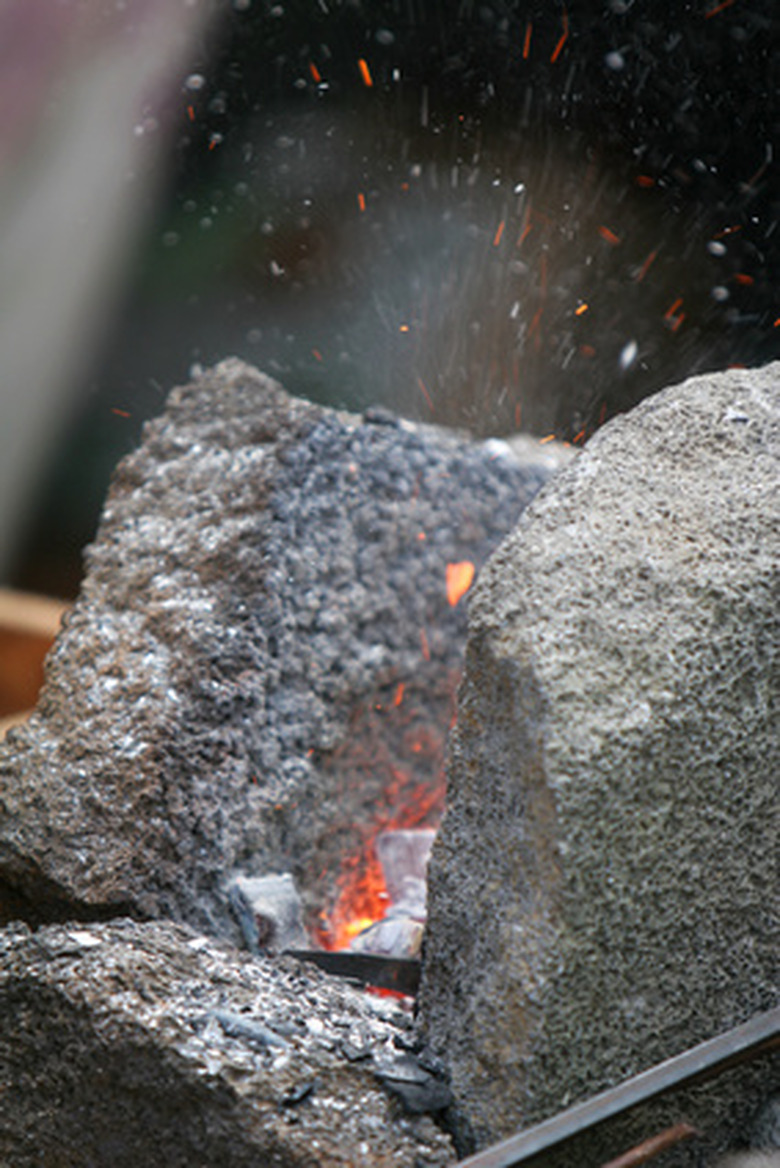The Characteristics Of Cinder Cones
Geologists have created four classifications to talk about volcanoes: lava domes, shield volcanoes, composite volcanoes and cinder cones. Cinder cones are the most common type of volcano. Among the volcanoes included in this category, also known as scoria cones, are Mount Shasta in California, the Lava Butte located near Bend, Oregon, the Cerro Negro in Nicaragua and Paricutin in Mexico. Cinder cones tend to be less famous because their eruptions rarely result in any deaths.
Shape
Shape
Cinder cones derive their name from their steep sides, which give them a cone-like appearance. The angle of their slopes may be as steep as 35 degrees, although older, eroded cones have softer slopes.
Size
Size
Cinder cones are small compared to other types of volcanoes. They average 100 to 400 meters in height (325 to 1,300 feet), while composite volcanoes may reach 3,500 meters (11,500 feet) and shield volcanoes can range as high as 8,500 meters (28,000 feet) — the height of Hawaii's Mauna Loa, the world's largest, as measured from the ocean floor to its top.
Craters
Craters
Scoria volcanoes tend to have bowl-shaped craters at their peaks.
Eruptions
Eruptions
Most cinder cones are monogenetic, which means they erupt only once. Their eruptions tend to be relatively weak compared to those of larger volcanoes.
Created by Other Volcanoes
Created by Other Volcanoes
Cinder cones often form as parasite cones along the flanks of larger volcanoes. They are formed by Strombolian eruptions, when gas forces steaming lava upwards into the air. The lava cools and falls to the earth as pebbles, which build up around the vent that ejected them, forming a cone. These parasite types of cone volcanoes usually occur in groups. Shifts in the position of the vent result in twin cinder cones. Variations in the power of eruption create nested cones. Not all cinder cones are found in groups; some are separate entities formed on basaltic lava fields.
Growth and Duration
Growth and Duration
Although larger volcanoes form very slowly, a cinder cone can develop rapidly. A good example is the Paracutin volcano in Mexico, which grew from a crack in a corn field to a cone over 300 meters high over the course of one year in the 1940s. Cinder cones also have a shorter lifespan than slower-growing types of volcano.
References
- U.S. Geological Survey: Description: Cinder and Scoria Cones
- San Diego State University: How Volcanoes Work
- U.S. Geological Survey: Principle Types of Volcanoes
- Extreme Science: Video: Eruption of the Parícutin Cinder Cone Volcano
- UC San Diego: Geology, Characteristics of Different Types of Volcanoes and Features
Cite This Article
MLA
Green, Tara. "The Characteristics Of Cinder Cones" sciencing.com, https://www.sciencing.com/characteristics-cinder-cones-7658216/. 24 April 2017.
APA
Green, Tara. (2017, April 24). The Characteristics Of Cinder Cones. sciencing.com. Retrieved from https://www.sciencing.com/characteristics-cinder-cones-7658216/
Chicago
Green, Tara. The Characteristics Of Cinder Cones last modified August 30, 2022. https://www.sciencing.com/characteristics-cinder-cones-7658216/
